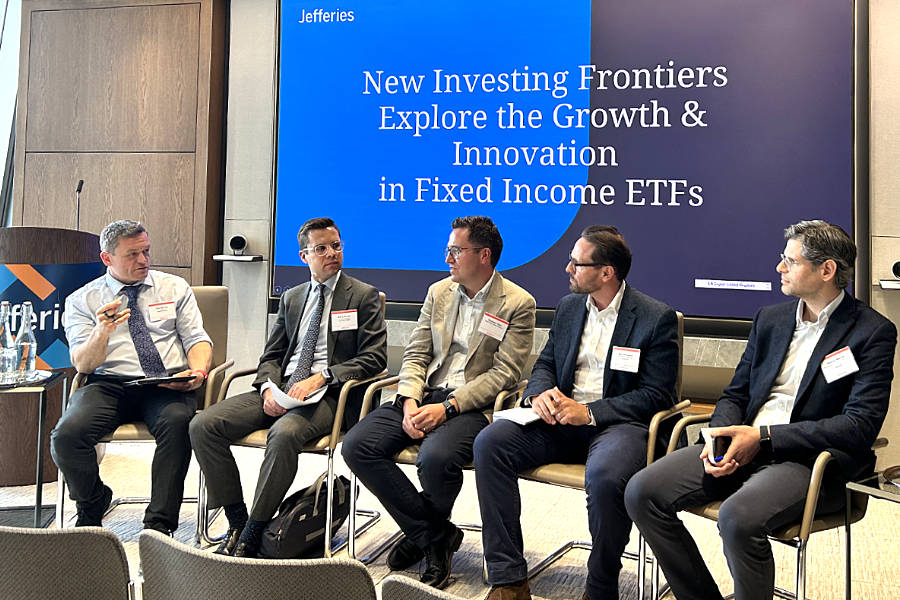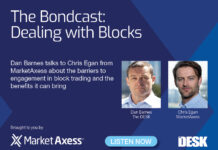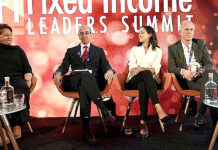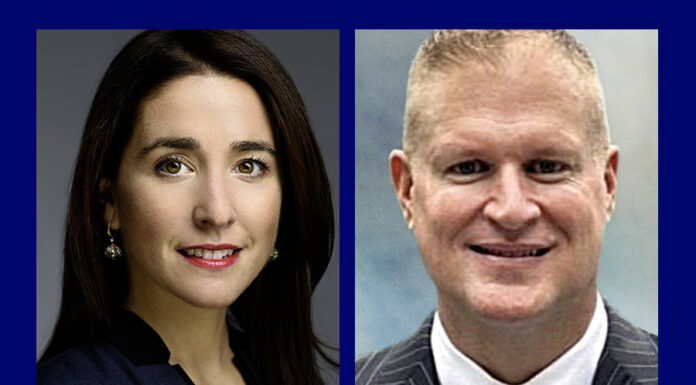
The impact of exchange-traded funds (ETFs) on the fixed income market cannot be overstated, agreed speakers at Jefferies’ ‘New Investing Frontiers – Explore the Growth & Innovation in Fixed Income ETFs’ panel discussion.
“They’ve not just changed who trades and how, but also how managers build portfolios and the skill sets that teams develop,” said Stephen Yeats, global head of fixed income beta solutions and UK head of investment at State Street Global Advisors. “These changes aren’t just driven by ETFs, but they’ve had a significant influence.”
Increasingly, traders are interacting with new counterparties – and different liquidity – and are engaging with growing volumes of data, he added.
“With fixed income ETFs becoming a core part of the e-trading ecosystem, new trading protocols have emerged,” noted Melvyn Merran, EMEA head of fixed income systematic trading at Jefferies. “ETFs have facilitated a significant increase in access to credit for big-data via machine-learning and AI.”
According to Merran, about 25% of daily traded volumes in credit are now directly or indirectly related to ETFs. That percentage rises when it comes to more compact marketplaces like high yield.
“Retail aggregator platforms have traditionally been the go-to audience for ETFs, as they provide easy access and are transparent on exchange. Yet, the largest chunk of volume is now over-the-counter (OTC) and driven by institutional investors, pointing towards greater adoption,” he observed.
From a venue perspective, Ben Sturgeon, equity product manager at Tradeweb noted that fixed income ETFs are now being used by 80% of Tradeweb’s clients – both retail and institutional.
On ETF adoption, the UK is starting to catch up to leaders in the industry like Germany and Switzerland, where both institutional and retail engagement is significantly higher, Sturgeon suggested. In the US, too, senior ETFs are seeing their assets under management grow, the panel noted.
The growth of fixed income ETFs is attracting new ETF issuers, often specialised in different pockets of credit risk. For an ETF to operate well, the rule of thumb is that it needs to reference a portion of the market with at least 100 issuers and a market capitalisation of about US$200-250 billion, Merran noted. This ensures sufficient granularity and liquidity, he explained, and prevents the ETF from having an outsized technical on the underlying’s liquidity. The fund’s assets under management will likely grow and mature when it reaches 3-5% of the size of the market it is tracking, he added.
Yeats concurred that ETFs have facilitated innovation and interest in portfolio construction. “These mirror broader asset management trends, are time sensitive and make running portfolios more scalable,” he said. “Change will continue from here.”
The growing popularity of ETFs has also appealed to markets traditionally seen as more inaccessible, such as CLOs.
“Because they’re seen as a specialist market it was sometimes hard to expand the investor base,” noted Barry Povey, portfolio manager at Fair Oaks Capital. “The value proposition for CLOs is simple, but they require dedicated resources to invest efficiently. Through ETFs, you offload a lot of that work to a specialist while keeping the benefits.” He went on to argue that people are looking to put capital into products with specialist managers.”
“Volume continues to spike, even more so as volatility ticks up. It’s paramount that accounts can get in and out of the risk easily and efficiently,” said Merran. “Despite extreme volatility lately, fixed income ETFs have been functioning well for both primary and secondary liquidity. There’s nothing to see when it comes to stress.”
In April, the predominant trends have been a focus on high-quality assets, a rebalancing from US dollar to euro-denominated assets, and decompression trades across liquidity, duration and rating.
“US dollar assets still have a gravitational pull, but people are looking regionally,” Yeats agreed. “There’s a focus on quality and liquidity as things get shaky.”
©Markets Media Europe 2025













